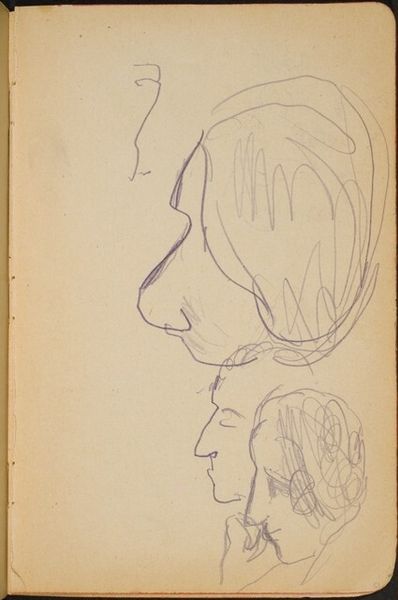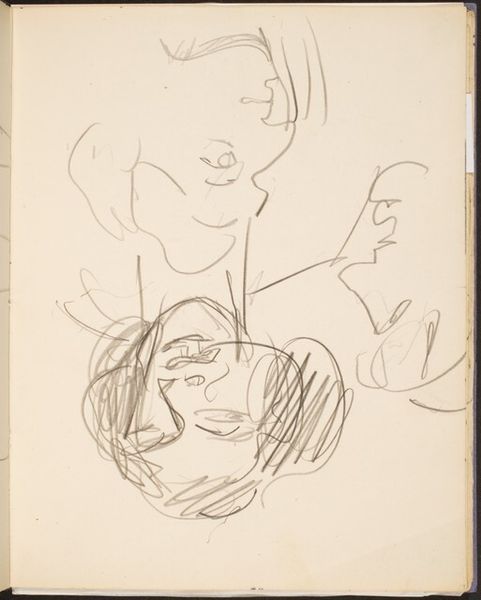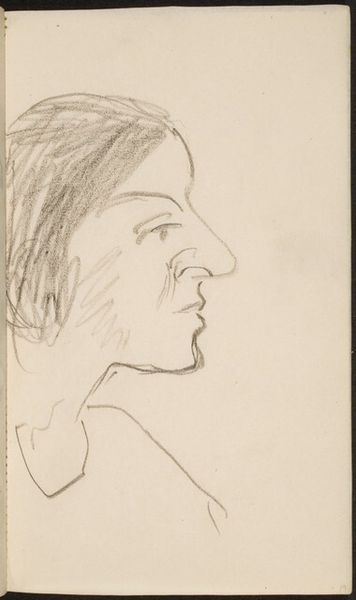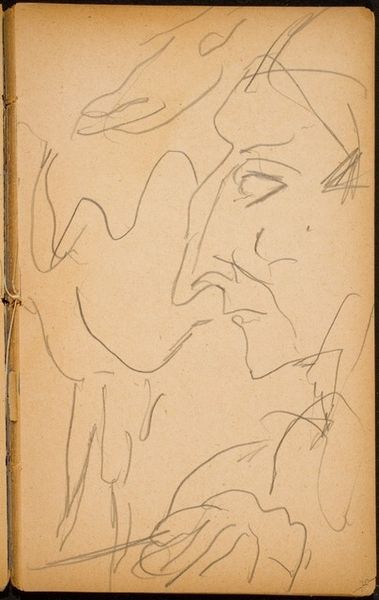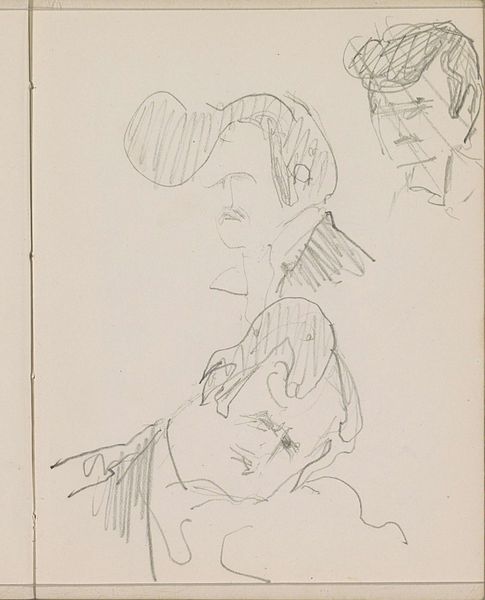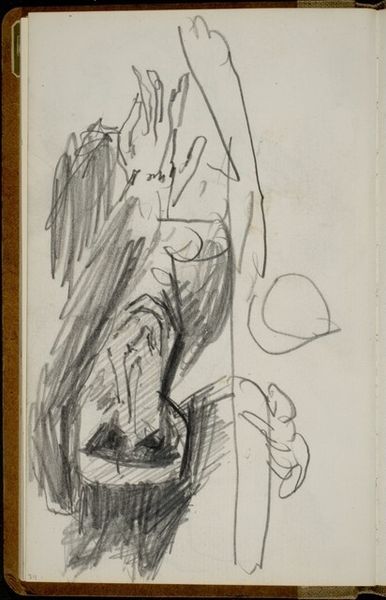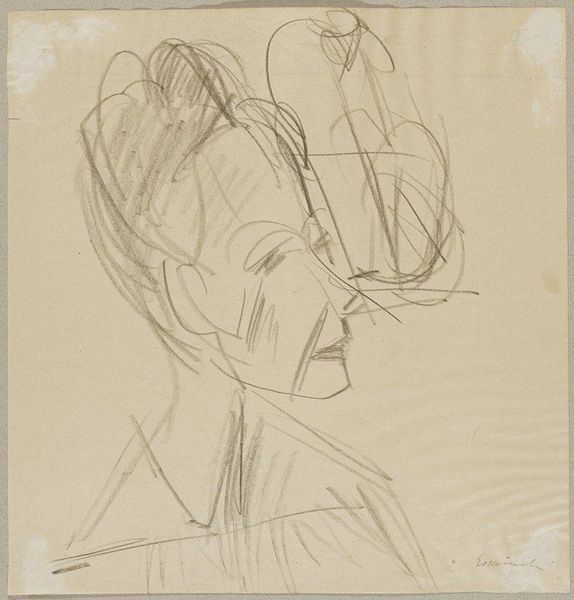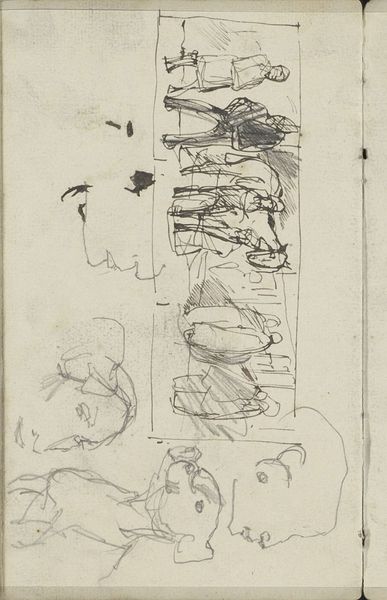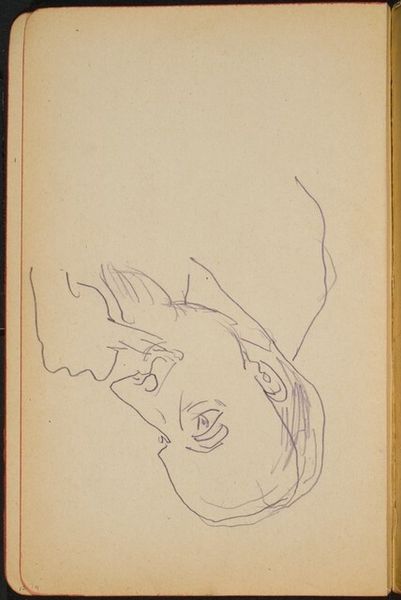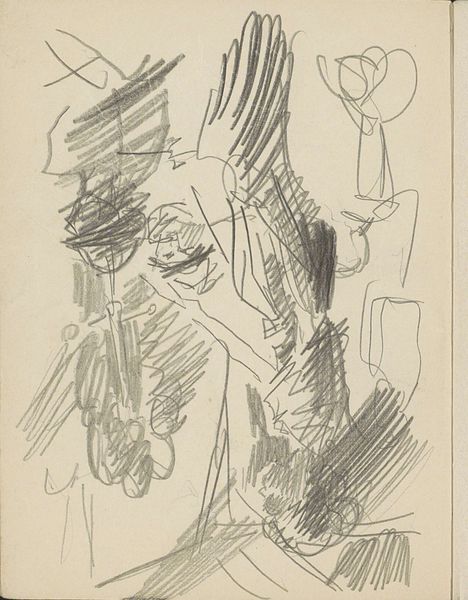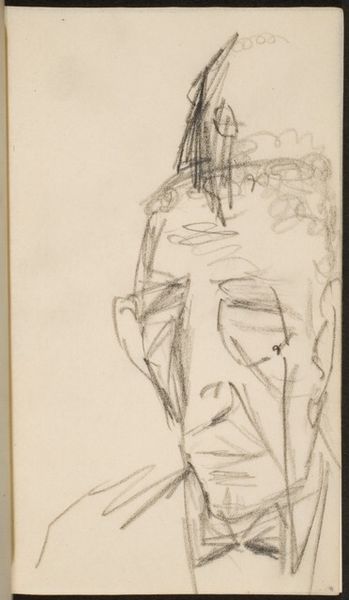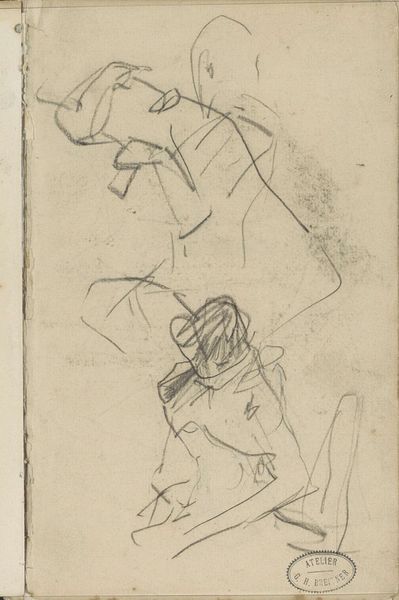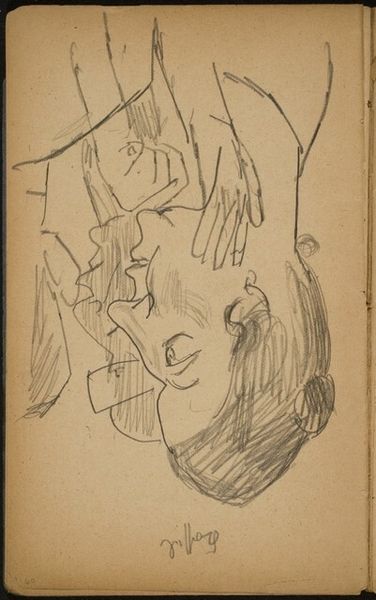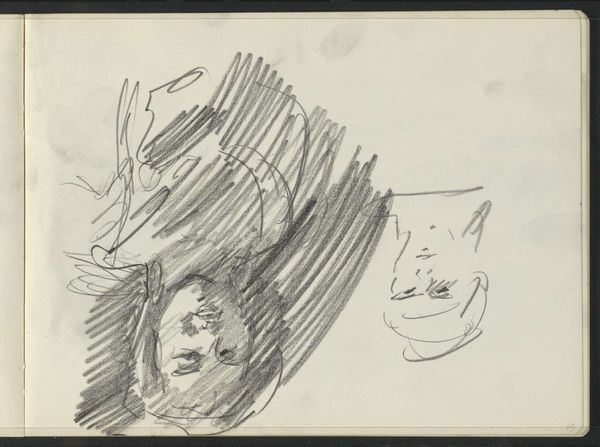![Studienköpfe (Portrait Studies) [p. 44] by Max Beckmann](/_next/image?url=https%3A%2F%2Fd2w8kbdekdi1gv.cloudfront.net%2FeyJidWNrZXQiOiAiYXJ0ZXJhLWltYWdlcy1idWNrZXQiLCAia2V5IjogImFydHdvcmtzL2E1NjAwNGE4LTBlNjItNGQxMi04ZTkyLTNkYjU4ZWUxYjU0My9hNTYwMDRhOC0wZTYyLTRkMTItOGU5Mi0zZGI1OGVlMWI1NDNfZnVsbC5qcGciLCAiZWRpdHMiOiB7InJlc2l6ZSI6IHsid2lkdGgiOiAxOTIwLCAiaGVpZ2h0IjogMTkyMCwgImZpdCI6ICJpbnNpZGUifX19&w=1080&q=75)
drawing, graphite
#
portrait
#
drawing
#
german-expressionism
#
expressionism
#
graphite
Dimensions: sheet: 19 x 12.5 cm (7 1/2 x 4 15/16 in.)
Copyright: National Gallery of Art: CC0 1.0
Curator: Before us is a page from Max Beckmann’s sketchbook, titled “Studienköpfe,” or "Portrait Studies." The medium appears to be graphite on paper, capturing the artist’s exploration of the human form. Editor: There’s a striking immediacy to it, almost voyeuristic. The quick, gestural lines give it a sense of urgency, as if Beckmann was capturing fleeting expressions. The mood is introspective, even somber. Curator: That's a perceptive reading. Beckmann worked during a turbulent time in Germany, and these studies likely reflect the social and psychological climate of the era. The intensity mirrors that of the wider Expressionist movement and how artists like Beckmann grappled with post-war realities. Editor: I see those stark profiles, but they also resonate with certain universal archetypes—the dreamer, the scholar, the burdened individual. Is it the reduction of the facial features to almost geometric shapes that evokes these iconic readings, do you think? Curator: It's fascinating that you pick up on archetypes. Indeed, it could be argued that Beckmann, whether consciously or not, was tapping into enduring human images. But I'm also compelled to think about how portraiture—even in sketch form—functions in the construction of identity and power, particularly during a time of significant upheaval. Consider, too, that artists used portraits in political satire throughout the period to challenge power. Editor: Interesting. Though, those almost brutal lines seem less like caricature and more like an honest observation of human fragility. Look at the bottom study – it feels weighed down with something, the weight of responsibility, or even existential dread. It seems symbolic to me, tapping into feelings from something deeper. Curator: That sense of vulnerability is important. And while this work may not have been explicitly intended as a political statement, art during periods of crisis inevitably speaks to the conditions under which it was made and seen. So I believe that even here, the image resonates and echoes to social contexts of the time. Editor: Well, it’s a reminder that art, even in its simplest form, can carry so many layers of meaning. It speaks to the eternal human condition as much as it tells the stories of those portrayed and also society and the place in history which affected them. Curator: Absolutely. It showcases art's powerful ability to provoke reflection, connecting us across generations to contemplate the meaning of the human experience, as shaped by individual events, and overarching socio-political currents.
Comments
No comments
Be the first to comment and join the conversation on the ultimate creative platform.
